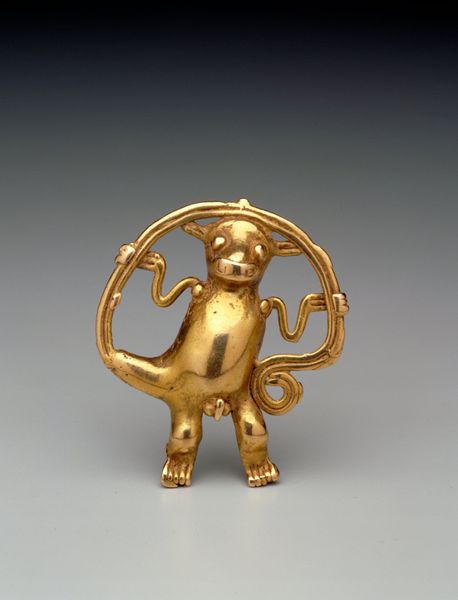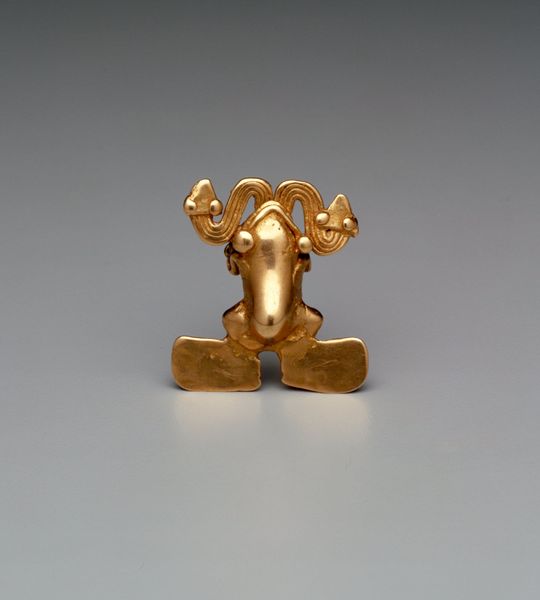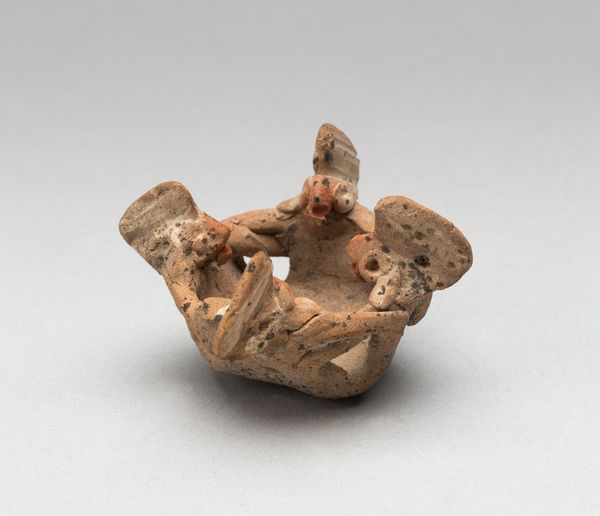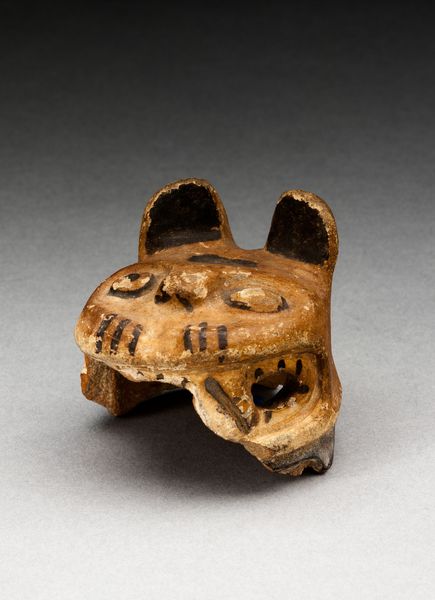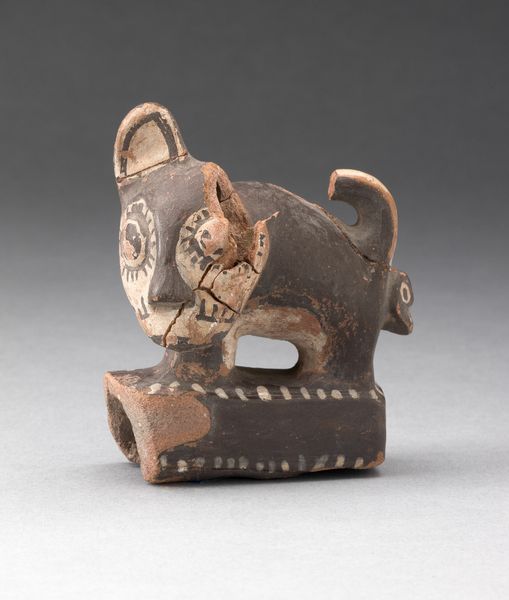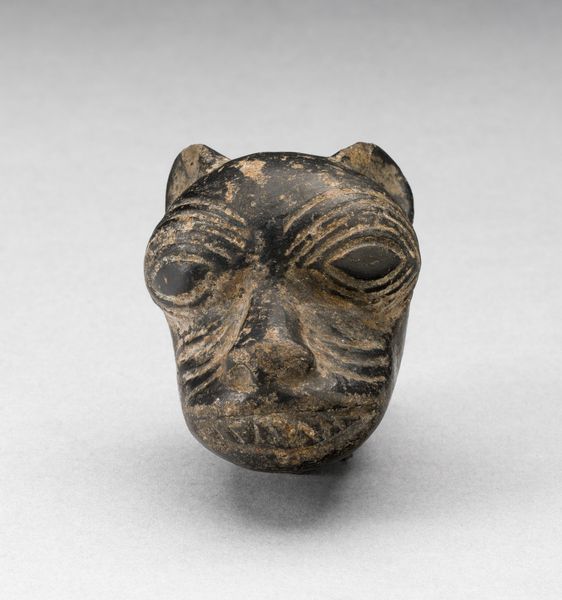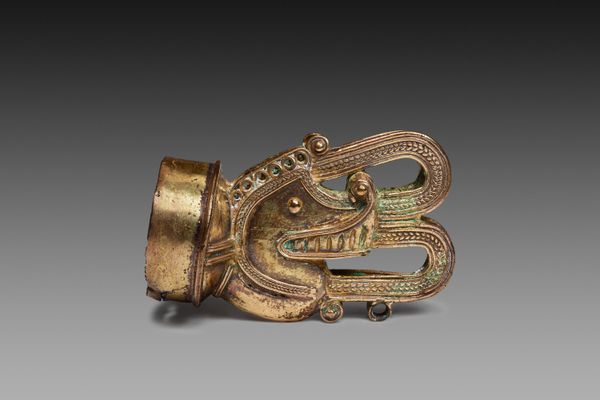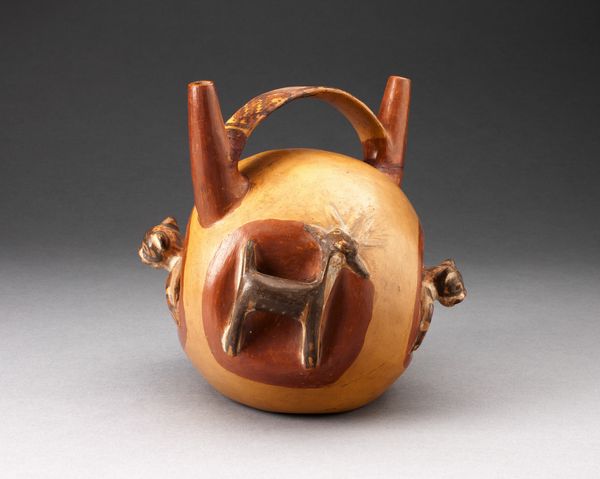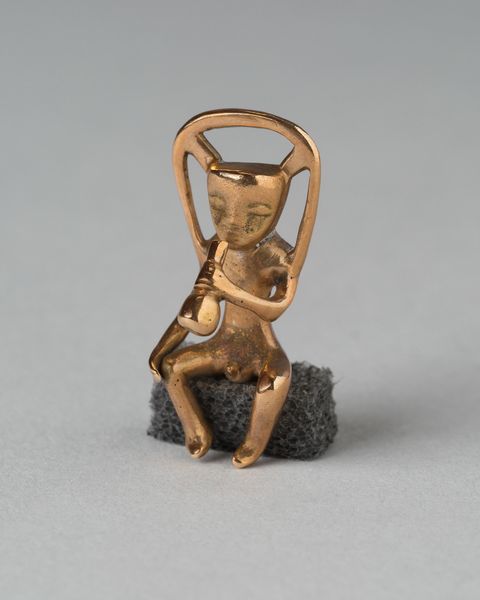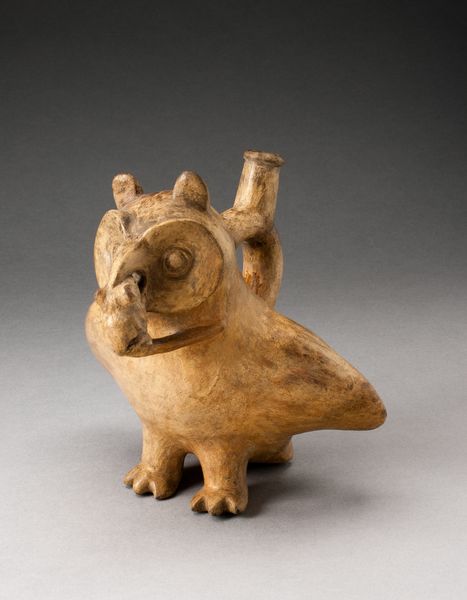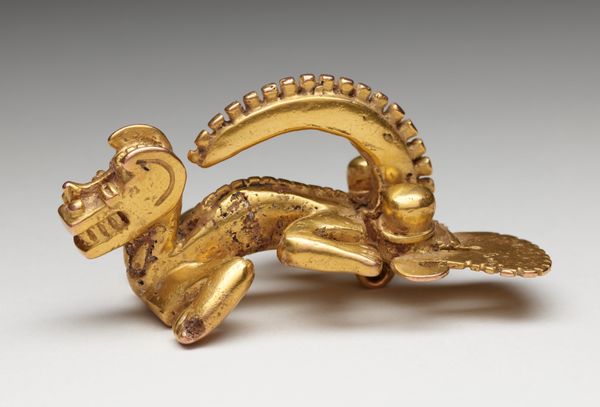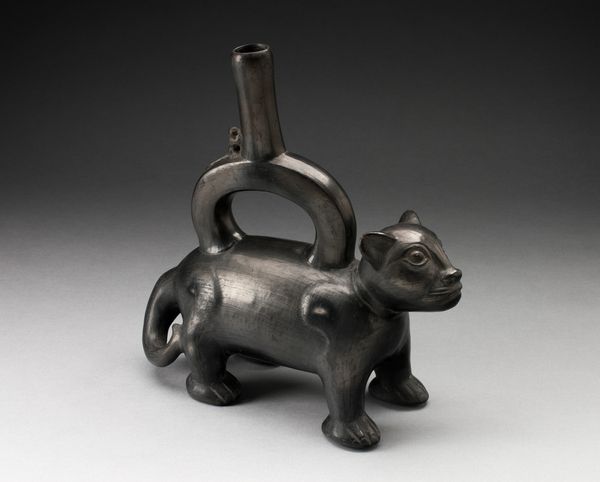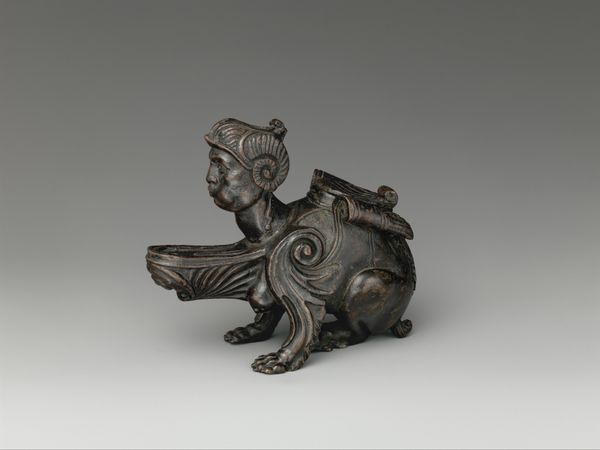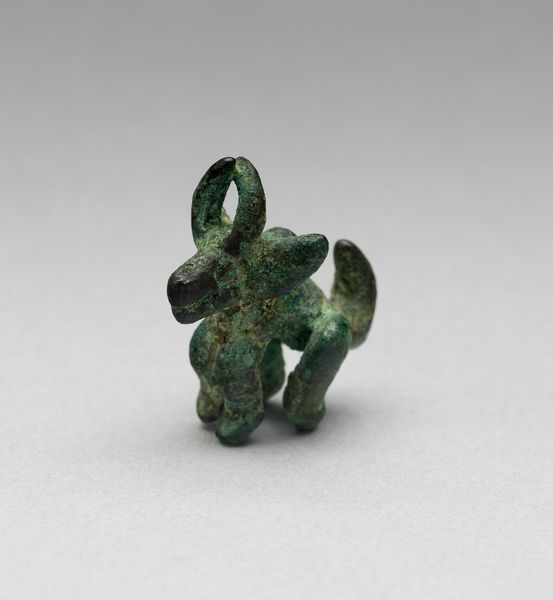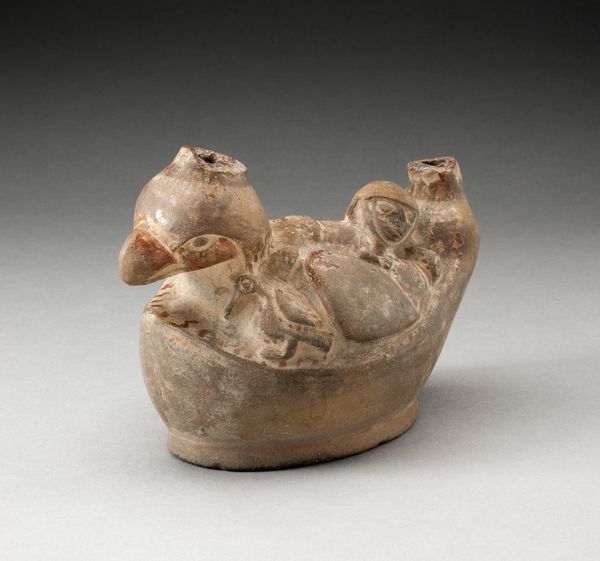
metal, gold, sculpture
#
metal
#
gold
#
figuration
#
form
#
sculpture
#
indigenous-americas
Dimensions: 1 3/4 × 1 9/16 × 1 1/2 in. (4.4 × 4 × 3.8 cm)
Copyright: Public Domain
Curator: What strikes me first is the remarkable state of preservation; these bronze bells, crafted by the Tairona people between 1000 and 1500, gleam with such vibrant gold color that you could believe they were crafted yesterday! Editor: Immediately, I am drawn to their diminutive size, their weightiness conveyed despite being miniature objects. The forms—bulbous bases topped with figural representations—have a delightful geometry and surprising amount of detail given the small scale. Curator: It is important to contextualize their creation. The Tairona civilization thrived in the region of modern-day Colombia and they held these small bells as symbolic and sonic objects, employed within elaborate rituals marking shifts in time and nature, in hierarchies of power and cosmology. We can infer through this artwork how integral they were to the Indigenous Americas and Tairona’s sociocultural life. Editor: Yes, the materiality speaks volumes. Bronze's sonic resonance, when struck, offers a rich acoustic experience and their forms point to sophisticated structural design: examine, for instance, how one of the bells feature what looks like a hollowed out mouth of an alligator as a sound emitting feature. Note how the bulbous base resonates. Curator: Thinking about its ritual uses brings up gendered assumptions. It may also serve as objects designating authority within a patriarchal leadership caste in order to justify power within society, with its forms reflecting nature as spiritual manifestations for leadership to be passed on from generation to generation. What about its iconography? The bestial forms could function to affirm social-religious dominance in their society. Editor: Indeed, consider the stylized rendering of the adornments; their strategic placement augments their acoustic expression, and by consequence, shapes the social implications that this bronze’s sonic vibrations may enact when put to use. There is, thus, a cohesive link between their sculptural qualities and symbolic meaning. Curator: I’m reminded of how material objects help archaeologists chart ideological terrains. It goes to show how even so-called simple forms such as a “Bell” can act as evidence when understanding pre-colonial historical legacies and the complex narratives about labor, religion, and the arts. Editor: Absolutely, considering how effectively each art-making process—from molding the base and refining the crowning figure—demonstrates mastery over a broad repertoire of metallurgical techniques which serves to affirm my interest as a formal object!
Comments
No comments
Be the first to comment and join the conversation on the ultimate creative platform.
